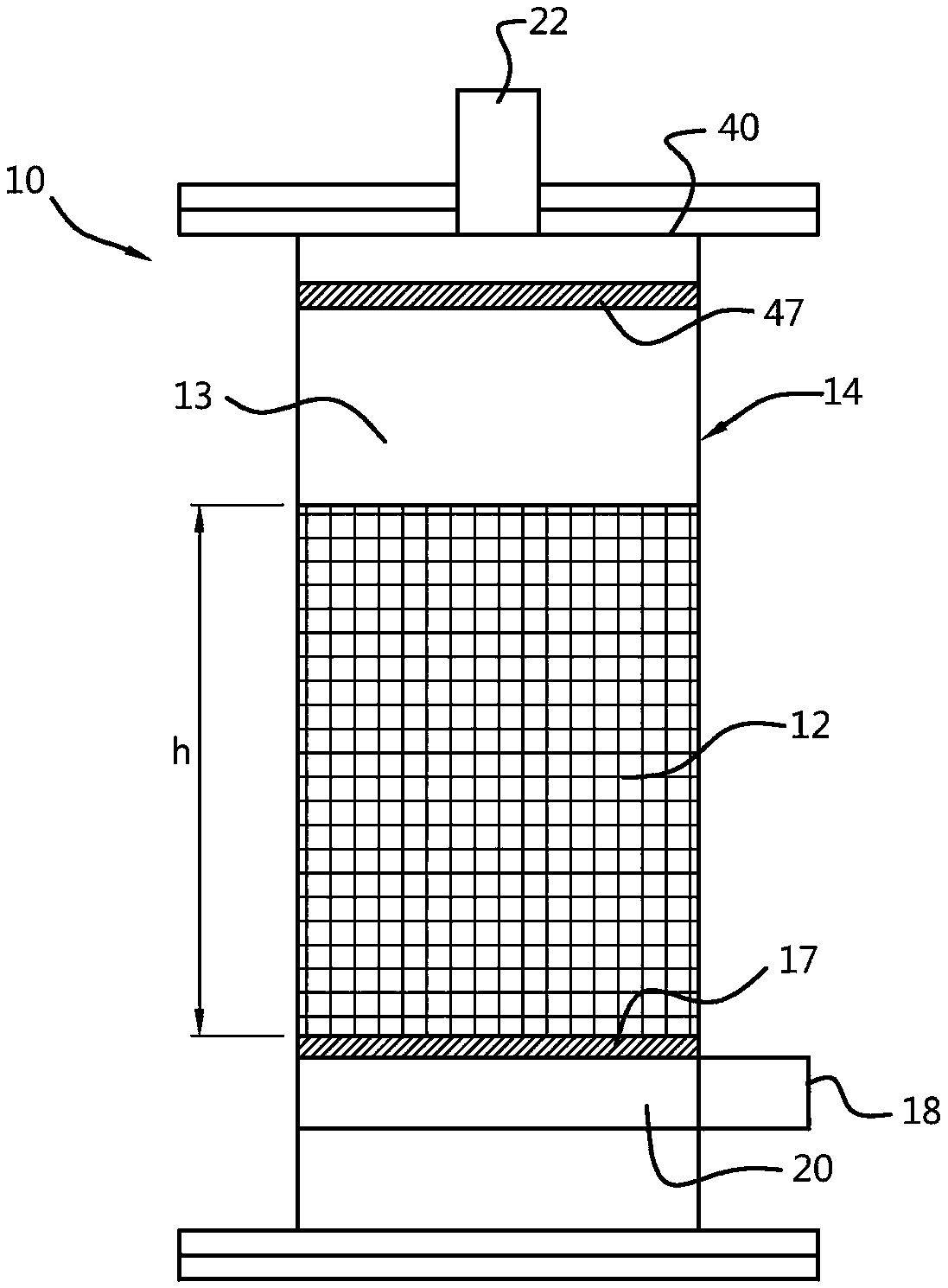Method for producing dihydroxy compounds
A technology of dihydroxy compounds and uses, which is applied in the field of manufacturing polycarbonate and producing phenol A, can solve the problem of uneven flow distribution in the reactor, etc., and achieve the effect of reducing dead space and good flow distribution
- Summary
- Abstract
- Description
- Claims
- Application Information
AI Technical Summary
Problems solved by technology
Method used
Image
Examples
Embodiment 1
[0082] Example 1: Basic shell reactor with two distributors (comparative)
[0083] The basic shell design consists of four side feed tubes and two distributors. The four feed tubes were modeled with 46 perforations with a diameter of 10mm. The longer tube was modeled with 13 perforations spaced at 5 cm intervals and the shorter tube was modeled with 10 perforations at the same spacing. Initially, the perforations are made on the upper side (upwards) of the tube. The distributor plate was modeled with 3825 smaller perforations with a diameter of 5 mm. The thickness of the distributor screen is 7 mm.
[0084] Cold flow simulations were performed on the geometry with the design as explained in the previous paragraph and the results are shown in Figure 8 and 9 middle. Figure 8 Velocity profiles of the base shell design on the mid-axis section (left) and at the mid-section (right) are shown. The velocity profile at the shaft section shows developing flow, and the velocity ...
Embodiment 2
[0085] Example 2: Changing the direction of the piercing to dissipate momentum
[0086] Based on the simulation results discussed in Example 1, it was concluded that the high velocity plaque was due to the fact that more fluid was trying to pass through the first perforation since it was the lower resistance path. This results in high local velocities at the first hole. By dissipating momentum with impingement plates, the effect of high velocity plaque on the catalyst bed can be minimized. It was decided to use the bottom wall of the section as an impact plate to dissipate this momentum. This requires placing perforations in the bottom face of the side pipes so that fluid travels down from these pipes and hits the bottom wall and dissipates momentum. Modifications were made to the geometry model to achieve this and advance computational fluid dynamics (CFD) simulations. A snapshot of the improved geometry with a perforation on the underside of the feed tube is shown in Fi...
Embodiment 3
[0088] Example 3: Effect of the number of distributor screens
[0089] Geometry models were developed using one and two distributor screens and CFD simulations were performed to understand the effect of additional distributor screens. Figure 13 Simulation results are shown. It is evident that the distributor screen at the bottom is mainly used to support the catalyst bed and also to help redistribute the fluid. However, without the support of CFD modeling, the role / need for the top sparger screen is called into question. Based on the simulation results, it was found that the top sparger screen acts to maintain a uniform flow even after the reaction section. Consequently, the dead space in the reactor is significantly reduced. This is critical for a good residence time distribution. exist Figure 13 In , the simulation results for a single sparger screen are compared to those for two sparger screens, and it is evident that the dead space is smaller when the top sparger sc...
PUM
| Property | Measurement | Unit |
|---|---|---|
| diameter | aaaaa | aaaaa |
| particle diameter | aaaaa | aaaaa |
| diameter | aaaaa | aaaaa |
Abstract
Description
Claims
Application Information
 Login to View More
Login to View More - R&D
- Intellectual Property
- Life Sciences
- Materials
- Tech Scout
- Unparalleled Data Quality
- Higher Quality Content
- 60% Fewer Hallucinations
Browse by: Latest US Patents, China's latest patents, Technical Efficacy Thesaurus, Application Domain, Technology Topic, Popular Technical Reports.
© 2025 PatSnap. All rights reserved.Legal|Privacy policy|Modern Slavery Act Transparency Statement|Sitemap|About US| Contact US: help@patsnap.com



